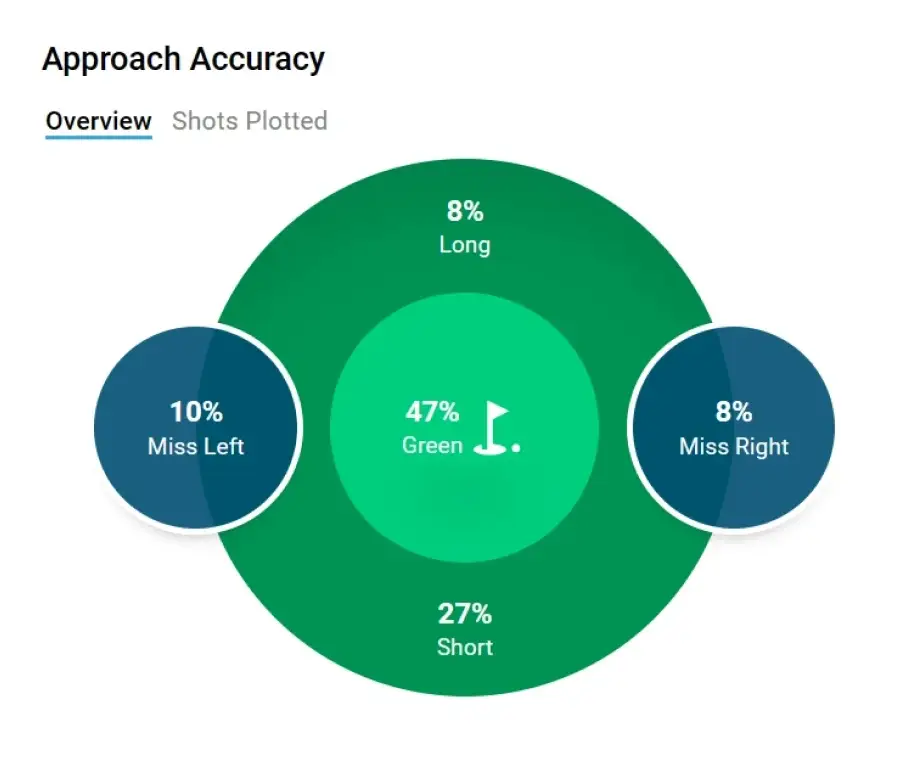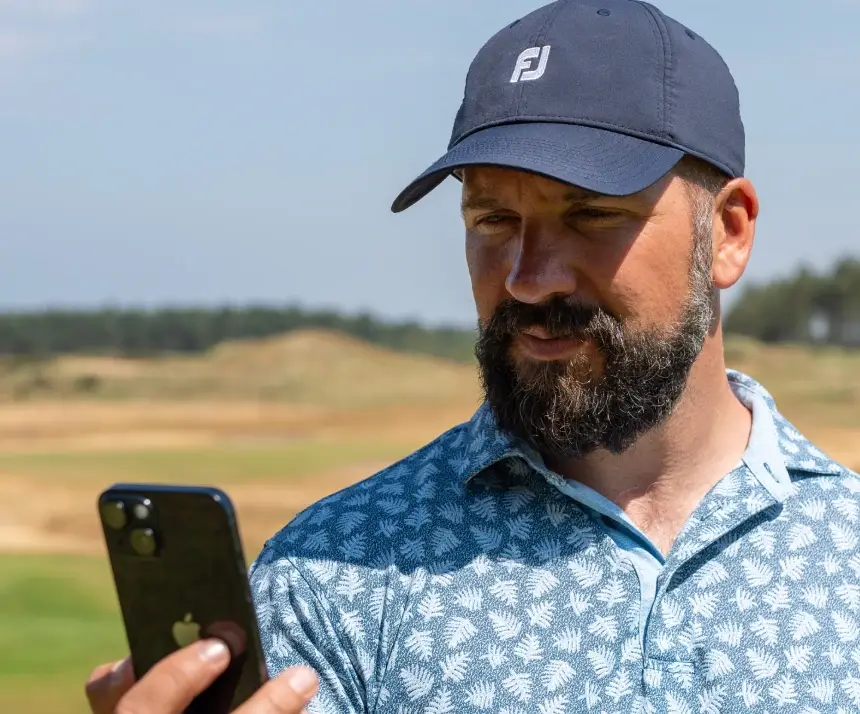12 HCP Case Study
With Peter Finch, in partnership with

Track your performance
Featured on cutting-edge devices like the Shot Scope X5/V5 watches, CONNEX mobile-enabled tracking tags, or the PRO LX+ laser rangefinder, Strokes Gained allows us to compare our performance with every section of the bag against our handicap and discover where we are better and worse than them.
Analyse your statistics
Dig deeper into the data to see what is actually happening – for example, your driving may be costing you the most shots per round, but is that down to distance or accuracy? If accuracy, what is the miss pattern?
Get help from a coach
Enlist professional help to work out what is causing the problem, and put a plan in place to deal with it.
3 Simple steps to
improving fast
Shot Scope and Peter Finch, in partnership with Today’s Golfer, present three simple steps to help you improve your golf game fast, with the help of performance tracking products such as the V5 GPS golf watch. The case study below details how Peter Finch used these three steps to help a 12 handicap golfer, Will Furness improve his golf game.
12 HCP Golfer Case Study
Peter's take on Will's
Shot Scope data
But more relevant to his immediate development is the data around his chipping and pitching. He misses 27% of shorter approach shots short – even from distances as short as 50 yards – and his short game whilst competent – is close to average for his handicap level. Until his power develops, working on these two areas will be the quickest way for him to lower his handicap.
But more relevant to his immediate development is the data around his chipping and pitching. He misses 27% of shorter approach shots short – even from distances as short as 50 yards – and his short game whilst competent – is close to average for his handicap level. Until his power develops, working on these two areas will be the quickest way for him to lower his handicap.



Focus area 1: Pitching
Will is a natural talent with a fine full swing. But things from 50-100yds are a little different. He has a tendency to hang back behind the ball a little, a move that leads to a shallow attack with the ball riding up the face. It adds up to a weak, high-flying, soft-landing shot and it is no surprise that the data confirms Will’s own observation that he tends to come up short a lot on pitch shots.
Short-term solution:
Take a stronger club
Will could help matters by taking a less-lofted club – perhaps a pitching wedge rather than a gap. But whilst this will give some instant help with that high, weak flight, it is not the most controllable or versatile shot or solution.
Long-term solution:
Chest 'covers' ball
A talented lad, Will got the hang of this almost instantly, and before long he gained five yards of distance from a shorter swing. He was also starting to develop the shot that lands, bounces and grabs – a really powerful weapon to have.
Focus area 2: Chipping
Short-term solution:
Improve with the 8
Long-term solution:
Gain versatility
Although Will’s chipping with his wedges was strong it was also a little one-dimensional; he tended to hit the same shot every time, and at times he struggled to meet the short-game’s demand for versatility.
I asked Will to pull his lob wedge and we set about experimenting with handle positions. He hit shots from the front, back and middle of his stance. Again very quickly, Will learned how to create variations in flight and spin. I don’t want Will or any golfer to play all greenside shots with a lob wedge; but when you add a little loft to the equation, you can start to build a short game versatile enough to deal with many different situations the short game throws up.
Track your shots
to record improvement
The final tip from Peter, is to persevere with the adjustments made in the lesson, and monitor how the changes effect performance. The best way to monitor performance on the golf course is by tracking your game with Shot Scope.
The final tip from Peter, is to persevere with the adjustments made in the lesson, and monitor how the changes effect performance. The best way to monitor performance on the golf course is by tracking your game with Shot Scope.
